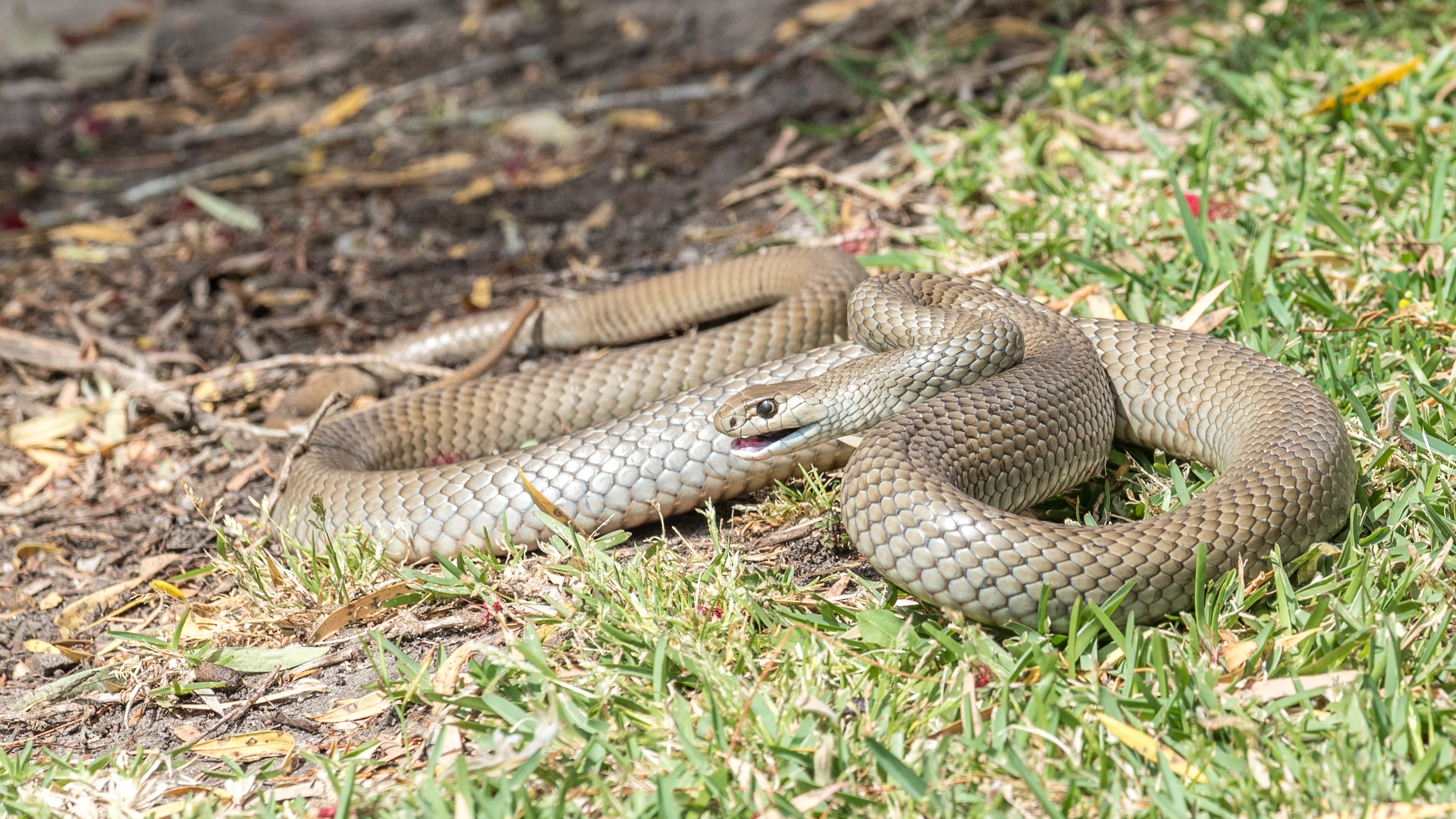Two extremely venomous snakes found mating in home drainpipe, yanked out by tails
The snakes cause more deaths in Australia than any other snake.

Some of the world's deadliest snakes were caught in the act of mating in a home's drainpipe and had to be yanked out by their tails, according to news reports.
Two Eastern brown snakes (Pseudonaja textilis), which are native to Australia and New Guinea, had crawled into a drainpipe at a home in Nambour, Queensland, in Australia and were only halfway into their mating session when snake catchers interrupted their tryst.
The interruption threw the male of the pair into a venomous hissy fit, and the deadly snake was close to landing multiple bites on its captor before both snakes were bundled away safely in cloth bags. The nail-biting scene was captured on video and can be seen on the snake-catching company's Facebook page.
Related: 7 shocking snake stories
"When we arrived, the snakes had their heads in the pipe so I was able to sneak up on them. I grabbed them both at the same time however one slipped out when I tried to pull them out of the pipe," Stuart McKenzie, owner of Sunshine Coast Snake Catchers 24/7 and captor of the two snakes, wrote under the video post. "Thankfully in the end I was able to get them both bagged up with the help of [co-worker] Olivia."
Despite the hair-raising struggle, disturbing the snakes' canoodling was absolutely the right call. Eastern brown snakes are the second most venomous snake in the world; these fast-moving, aggressive and irascible reptiles kill more people every year in Australia than any other snake, according to the Australian Museum. The snakes, which are the second most venomous snakes in the world, after the inland taipan, can reproduce rapidly in populated areas and easily enter into homes through small gaps and crevices.
In fact, the serpents only need to inject 0.00014 ounces (4 milligrams) of venom into a victim, human or otherwise, before the potent mixture of neurotoxins, cardiotoxins and procoagulants begins a process of increasing paralysis, cardiac arrest and uncontrollable bleeding. In some cases, a person will die of the snake's bite after venom causes bleeding in the brain.
Sign up for the Live Science daily newsletter now
Get the world’s most fascinating discoveries delivered straight to your inbox.
While these snakes are usually an "alert and nervous" species, according to the Australian Museum, they will "strike with little hesitation" if threatened or surprised, often curling up into a tight s-shape before lunging at their attacker.
October is breeding season for the snakes, so McKenzie and other snake catchers have been seeing an increase in snake activity as the roaming reptiles search for mates. In the video, the snake catcher appears nervous, despite his thick, padded clothing and expertise. "You just disturbed him from a nice little mating session, I'd be pissed off too," Sunshine Coast Snake Catchers 24/7 McKenzie's co-worker Olivia, remarked in the video.
Originally published on Live Science.

Ben Turner is a U.K. based staff writer at Live Science. He covers physics and astronomy, among other topics like tech and climate change. He graduated from University College London with a degree in particle physics before training as a journalist. When he's not writing, Ben enjoys reading literature, playing the guitar and embarrassing himself with chess.









